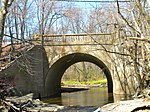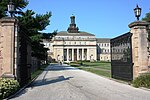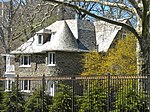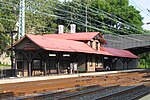Lankenau Medical Center
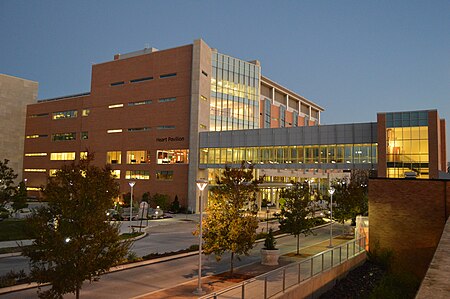
Lankenau Medical Center, part of Main Line Health, is a 370-bed acute care, teaching hospital in Wynnewood, Lower Merion Township, Pennsylvania. Lankenau Medical Center has been named as one of the top 5 hospitals in the Philadelphia region by U.S. News & World Report and received the Gold Seal of Approval from the Joint Commission. Lankenau Medical Center’s clinical areas include the Lankenau Heart Institute, the gastrointestinal and GI endoscopy program, cancer care services, pulmonology, orthopaedics, obstetrics and maternity, including and a level III neonatal intensive care unit, as well as minimally invasive and robotic surgery. The campus is also home to the Lankenau Institute for Medical Research and the Annenberg Center for Medical Education.
Excerpt from the Wikipedia article Lankenau Medical Center (License: CC BY-SA 3.0, Authors, Images).Lankenau Medical Center
East Lancaster Avenue, Lower Merion Township Wynnewood
Geographical coordinates (GPS) Address Phone number Website External links Nearby Places Show on map
Geographical coordinates (GPS)
| Latitude | Longitude |
|---|---|
| N 39.988 ° | E -75.262 ° |
Address
Lankenau Medical Center
East Lancaster Avenue 100
19096 Lower Merion Township, Wynnewood
Pennsylvania, United States
Open on Google Maps

